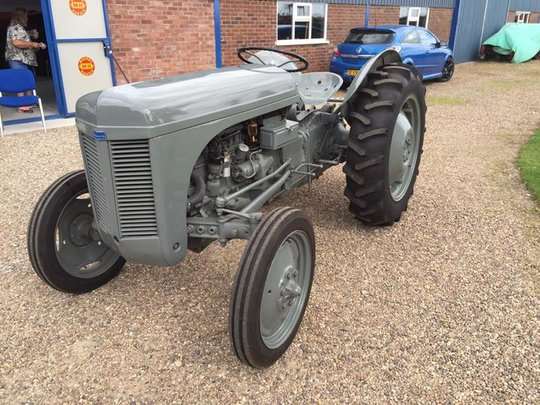The company also manufactured different models in England and the United States
IN THE SHOP with Rachel
By Rachel Gingell
Farms.com
If there was an award for most commonly misidentified tractor, the Ferguson 2085 would be in the running! There are a few different models that look very similar and go by some different names. Getting the tractor you’ll actually looking for is really important, though – a little bit of history might help you understand why.
The Ferguson 2085 looks a lot like a 9N Ford – close enough that the 2085 is commonly mistaken for the more popular 9N. These tractors have a lot in common. The 9N was created in a partnership between Harry Ferguson and Henry Ford.
However, that “handshake agreement” didn’t last long. Once the partnership broke down, Ferguson and Ford each built their own competing tractors. The Ferguson 2085 and similar models are Harry Ferguson’s re-imagining of the iconic Ford 9N design.
Ferguson’s new model 20 tractors were manufactured in two different places: the United States and England. In order to keep the models straight, they were designated the TO-20 (TO stands for Tractor, Overseas) and TE-20 (Tractor, England).

It wasn’t long until local supply and demand resulted in split designs. The TO-20 was manufactured with a Continental engine and the TE-20 started out with the same. After only a few tractors manufactured in this way, the TE-20’s engine was replaced with a Standard gasoline engine and re-designated the TEA-20.
To make things even more interesting, the name TEA-20 didn’t really stick. You’ll probably hear people refer to this model as the Ferguson 2085, with the 85 representing the metric engine size.
Why does all this matter? One word: parts. The TO-20 is prevalent in the United States and the 2085 was sold in Canada. If you live in the United States, you’ll have a difficult time getting parts for the 2085 version – and if you live in Canada, steer clear of the TO-20. Even though these tractors look the same from the outside, these engine differences will really matter when you go to repair the tractor.
If you’re interested in purchasing one of these tractors, here’s one more tip: check the engine block thoroughly for welds. These old Fergusons had a tendency towards cracked blocks. (This design flaw was corrected in later models). While welded or otherwise repaired blocks can still be used for everyday or parade purposes, they won’t hold up to heavy farm work. It’s best to find a tractor with an intact block and take good care of it.